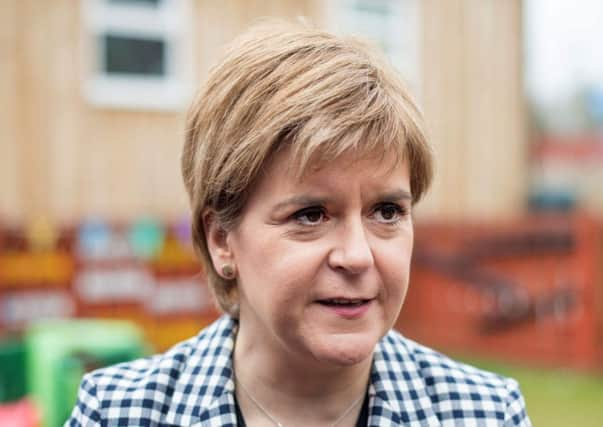Analysis: Is the 'Sturgeon Slump' real or a misreading of results?


Whatever its relative merits, the opposition parties in Holyrood clearly think that the anti-SNP phrase ‘Sturgeon Slump’ clearly has legs.
The slogan was first coined by the Conservatives as they pointed to pessimistic economic data as proof that Nicola Sturgeon’s plans for another independence referendum was harming the country’s finances.
Advertisement
Hide AdAdvertisement
Hide AdOver the weekend, however it became clear that Labour too were going to use the term to claim another failure on behalf of the First Minister.
Kezia Dugdale’s party, fresh from their own bruising defeat at the hands of voters, declared that this Sturgeon Slump was a result of analysis from the local council elections that they claim show a decline in SNP support.
Has the First Minister alienated voters with her indyref2 approach? Or is this just an opportunistic opposition comparing apples and pears? We look at some of the detail.
A mixed night
The narrative of Thursday’s vote has already seemingly been clearly established – a good night for the SNP, a bad night for Labour, and a very good night for the Scottish Conservatives.
That’s not to say that there wasn’t some results that will have been greeted with frustration at SNP HQ in Edinburgh.
The party will be thrilled to have taken control of Glasgow City Council, their main target, but fell short of an overall majority, having been thwarted in part by a strong Tory performance in the city.
They also fell back in some other areas, and some incumbents in Westminster seats will be looking over their shoulder at a Tory revival in parts of the North East and areas like Perthshire and Moray.
Whether that Tory performance yields anything like the 15 seats the party boldly predicted today still seems distinctly unlikely.
Advertisement
Hide AdAdvertisement
Hide AdIt seems that the picture will be the same on June 8 as it has been for the past two national elections, with the SNP on top but not imperious, the Tories buoyant, and Labour a distant third.
Does that represent a slump for the nationalists? Labour seem to think so.
“The slump”
Both the Conservatives’ predictions on their expected success in Scotland at the general election and Labour’s claims that Nicola Sturgeon’s fortunes are about to go in to reverse are based on extrapolation.
Labour have taken data which compares constituency votes in the 2015 general election and 2016 Holyrood election to the amount of ‘first preference’ votes received by the SNP.
Labour staffers tweeted a BBC graph yesterday seeming to show a decline in support, from “50 per cent” at the general election, to 32 per cent at the local elections.
Their campaign manager James Kelly MSP said: “It’s official - the Sturgeon surge has turned into a Sturgeon slump with the threat of a divisive second independence referendum hanging over Scotland.
“How can Nicola Sturgeon claim to speak for all of Scotland having secured less than a third of the vote?
“In 2015 the SNP secured half of the Scottish vote, and these official figures show that has now plummeted by 18 points.”
Advertisement
Hide AdAdvertisement
Hide AdLabour are keen to use this information to show that in certain seats only they can defeat the SNP, and say they are now leading or within touching distance of Ms Sturgeon’s party in seven seats.
Black and white? Not quite
Unfortunately for the Labour party, their reading of the results last week was overtly simplistic at best, and wishful thinking at worst.
While it is not uncommon to look at local elections for a hint of what’s coming in a general election (as was pointed out after Jeremy Corbyn’s dreadful showing in England), the comparison doesn’t work directly.
Far more apt would be to compare the SNP’s share of first preference votes to the last time that Scots voted in an election using the STV system. That was in 2012, when the SNP secured 32 per cent of first preference votes.
“Sturgeon stagnates” might be a reasonable way to look at the direction of travel since that vote, but it seems only fair to compare like with like, and a slump in local election terms seems somewhat harder to quantify.
For one, there are variables in a council election which don’t tend to present themselves in Holyrood or Westminster votes.
For one, independents do significantly better in elections to Scotland’s local authorities, with independents securing 11 per cent of the vote.
Turnout also tends to be much lower at local elections, and with multiple candidates from the same party, there is often a split vote.
So while some results may have made Nicola Sturgeon nervous, it is not strictly accurate to talk of a Sturgeon slump just yet.
That could, of course, all change on June 8.
